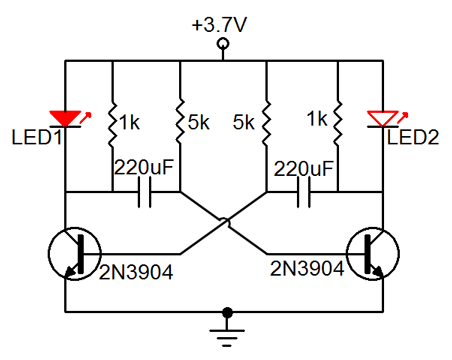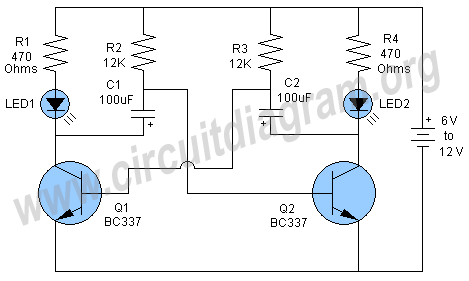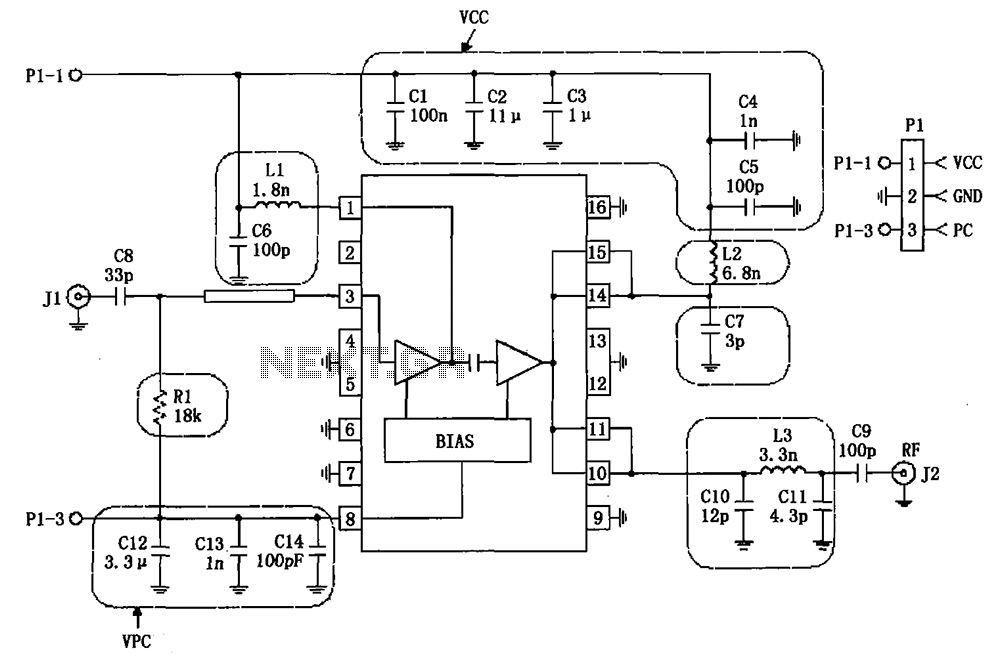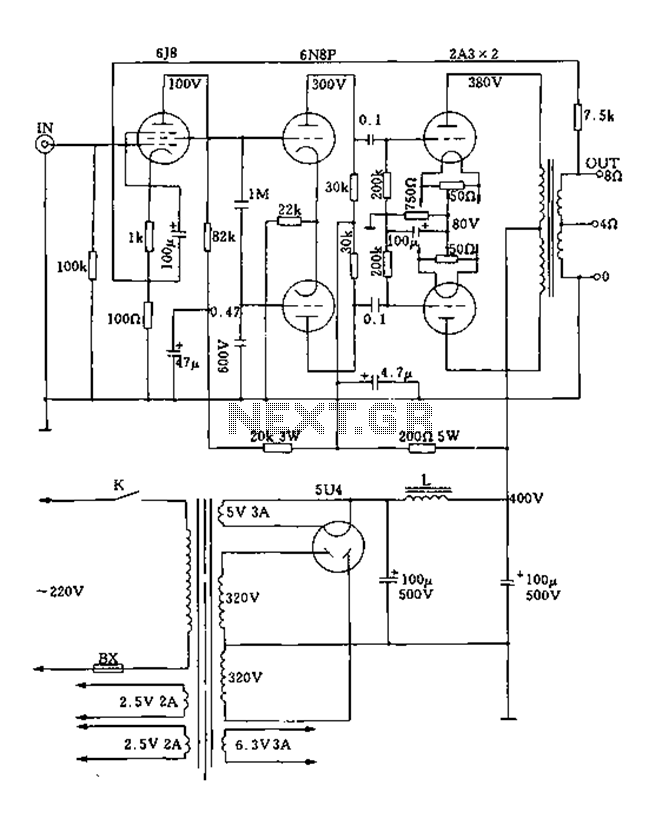
Break burglar alarm circuit II

The circuit operates based on a principle where the SCR (Silicon Controlled Rectifier) trigger is grounded, keeping it in the off state. When a burglar triggers the alarm, a voltage is supplied to the SCR trigger, turning it on. This activation causes an oscillator, consisting of complementary transistors VT1 and VT2, to generate a beeping sound. Simultaneously, a strobe light emitting diode (LED) is energized by the thyristor, flashing to alert that a theft is in progress. The alarm can be disarmed using a switch labeled 'S'.
The described circuit functions as a security alarm system designed to detect unauthorized entry. The SCR acts as a switch that controls the flow of current through the circuit. In its default state, the SCR remains off, preventing any current from flowing through the oscillator and the LED. The grounding of the SCR trigger ensures that it does not activate inadvertently.
Upon detection of a potential intruder, a sensor mechanism (not detailed in the original description) sends a trigger voltage to the SCR. This voltage causes the SCR to transition from its off state to an on state, allowing current to flow through the oscillator circuitry. The oscillator is typically designed using two complementary transistors, VT1 and VT2, which alternate in conduction, creating a square wave output. This oscillation generates a beep sound through a connected piezoelectric buzzer or speaker, providing an audible alert.
At the same time, the current flowing through the SCR energizes the LED, which is configured to blink at regular intervals. This visual alert serves as an additional deterrent to potential intruders and notifies individuals nearby of the security breach.
To ensure user control over the system, a switch labeled 'S' is incorporated into the circuit. When activated, this switch interrupts the trigger voltage to the SCR, effectively disarming the alarm system. It is crucial that the switch is easily accessible for quick deactivation after legitimate entry.
Overall, this alarm circuit is a practical solution for enhancing security in residential or commercial environments, utilizing simple electronic components to provide both audible and visual alerts in the event of unauthorized access.Ding for the circuit principle: care, vs SCR trigger grounded, it is in the off state. When someone leads A burglar broke, the SCR trigger end to give a trigger voltage is turn ed on, the oscillator complementary VT1 and VT2 and the like of electrical work, issued a beep sound. Meanwhile strobe light emitting diode LED is also due to thyristor energized and winking, inform someone to steal.
S to disarm the alarm switch.
The described circuit functions as a security alarm system designed to detect unauthorized entry. The SCR acts as a switch that controls the flow of current through the circuit. In its default state, the SCR remains off, preventing any current from flowing through the oscillator and the LED. The grounding of the SCR trigger ensures that it does not activate inadvertently.
Upon detection of a potential intruder, a sensor mechanism (not detailed in the original description) sends a trigger voltage to the SCR. This voltage causes the SCR to transition from its off state to an on state, allowing current to flow through the oscillator circuitry. The oscillator is typically designed using two complementary transistors, VT1 and VT2, which alternate in conduction, creating a square wave output. This oscillation generates a beep sound through a connected piezoelectric buzzer or speaker, providing an audible alert.
At the same time, the current flowing through the SCR energizes the LED, which is configured to blink at regular intervals. This visual alert serves as an additional deterrent to potential intruders and notifies individuals nearby of the security breach.
To ensure user control over the system, a switch labeled 'S' is incorporated into the circuit. When activated, this switch interrupts the trigger voltage to the SCR, effectively disarming the alarm system. It is crucial that the switch is easily accessible for quick deactivation after legitimate entry.
Overall, this alarm circuit is a practical solution for enhancing security in residential or commercial environments, utilizing simple electronic components to provide both audible and visual alerts in the event of unauthorized access.Ding for the circuit principle: care, vs SCR trigger grounded, it is in the off state. When someone leads A burglar broke, the SCR trigger end to give a trigger voltage is turn ed on, the oscillator complementary VT1 and VT2 and the like of electrical work, issued a beep sound. Meanwhile strobe light emitting diode LED is also due to thyristor energized and winking, inform someone to steal.
S to disarm the alarm switch.





